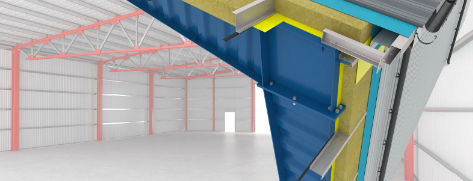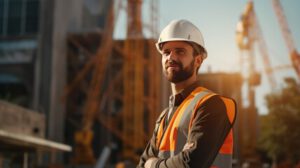The construction process can seem daunting if you’re in the market for a new steel building. But don’t worry – our prefabricated buildings are the easiest to construct! Ground and site preparation is essential for metal building construction. You’ll want to hire a general contractor or erection crew to ensure a flat foundation slab and secure anchor bolts.
Design
 Steel structures can be used to build various buildings, including warehouses, churches, storage centers, and even office spaces. They can also span longer distances, making them an excellent option for larger structures. Steel building frames can be designed to meet local area codes and load limits, which helps ensure that your new structure will be safe and up to code. Click Here for more information.
Steel structures can be used to build various buildings, including warehouses, churches, storage centers, and even office spaces. They can also span longer distances, making them an excellent option for larger structures. Steel building frames can be designed to meet local area codes and load limits, which helps ensure that your new structure will be safe and up to code. Click Here for more information.
When constructing a steel building, it is important to draw out the structure before beginning the construction process. This will allow you to make any necessary changes before the construction begins and will help your steel building manufacturer understand what you want. Additionally, it will help ensure that all of the necessary materials are delivered to your site on time.
The design process for a steel building involves creating a metal layout with structural steel pieces that support loads and provide comprehensive stiffness. This type of construction is reliable and requires fewer raw materials than other types of structures. The structure can also withstand extreme forces and weather conditions, such as earthquakes and hurricanes. In addition, it is resistant to termites, bugs, mildew, and fungi.
The design process for a steel building starts with conceptual designs that are based on engineering judgment and experience. These drawings will be the foundation for preparing detailed drawing. The drawing will contain information on the load data, requirements for materials and design, the structure arrangement, and cross-sectional and primary point design selection. These detailed drawings will be the basis for preparing construction documents and the structure fabrication. Allplan 2020 is an excellent software for designing a steel structure, as it allows engineers to model the entire structure quickly and easily.
Engineering
Metal buildings are a growing trend in the construction industry. They are durable and cost-effective, making them a great choice for many applications. However, there are a few things to consider before starting a steel building project. It is important to consult with an engineer to ensure that the project is done properly and meets all local codes. The engineer will also help you choose the right materials and design to suit your needs.
When you are choosing a company for your steel building project, it is important to check their credentials and reputation. A reputable steel building company will be able to provide references of past projects that have been completed successfully. If you find any negative information about the company, it is best to choose another option.
The engineering process for a steel building starts with the preparation of the site. This includes obtaining all necessary permits and ensuring that the site is free of obstructions. It is also essential to test the soil to ensure that it can support a heavy structure. If the soil is too sandy or too clay-like, it may not be suitable for a steel building.
Once the foundation is set, a detailed blueprint must be prepared for the construction and fabrication of the building components. This will include the load data, technical data, requirements for materials and design, and the structure arrangement. The detailed drawings are then used for the construction and fabrication processes.
Once the steel building is erected, it will be ready for use. The final step is to have a walkthrough with a local building inspector to make sure that the building meets all the requirements. Then, you can begin using the building and enjoying all of its benefits.
Procurement
Once you have completed the engineering phase of your steel building, it is time to order materials. Depending on the size and complexity of your project, you may be asked to place a 25% deposit at this point. This is also a good time to hire local sub-trades, a steel building erection crew, or a general contractor. In addition, it is a good idea to apply for any required permits that might be needed.
The procurement process is one of the most important phases in a steel building construction project. You should make sure that your supplier has a history of reliable work and a solid reputation in the industry. It is also important to find out how long they have been in business and whether or not they provide a warranty for their products.
Before you place your steel building order, ask your supplier about their manufacturing and shipping processes. The closer the manufacturer is to your job site, the lower your shipping costs will be. In addition, it will save you a lot of time and money if you can get your supplies on a regular schedule.
Once your steel buildings materials arrive, the erection process begins. During this stage, the columns are set, and girts and purlins are added to give your building its frame structure. Then, the roof and wall sheeting is installed. If you hired a general contractor for this stage, be sure to attend the inspection so that you can make sure that the erection crew is following all of your instructions. This is the only way to guarantee that your building will be built to your specifications.
Fabrication
A steel building is a type of structure that uses metal for both its internal support and exterior cladding. It can be used for a wide variety of purposes, from warehouses and storage spaces to retail stores, offices, and even living accommodation. This type of construction is typically much less expensive than other types of buildings, and it can be built quickly and easily.
The first step in the process of constructing a steel building is preparing the site. This may include grading the land, clearing away any trees or other obstructions, and installing a concrete foundation. Once the groundwork is complete, it is time to order your building and prepare it for delivery.
Once the steel materials have been delivered to the jobsite, they must be inspected for any damage or missing components. It is a good idea to have the owner or general contractor of the project present during this inspection, as they will be able to confirm that all necessary pieces have arrived and that no shortages are noted.
This is also a great time to add any customizations that you have been thinking about, such as extra windows or doors. Your steel building kit will include detailed instructions for constructing these openings, and your steel building company should be able to advise you on which types of openings are best suited for your building type.
Finally, once the facility is constructed, it must be inspected and approved by your local building inspector. As long as everything has been completed properly, you will be issued a Certificate of Occupancy and can begin using your new facility. This is a great way to make sure that your building has been built according to all applicable standards and regulations, and that you can enjoy the benefits of your investment for years to come.
Erection
When the erection process begins, it is crucial to follow the instructions that are included with your building kit. Serious injuries can occur if these are not followed properly. If your building kit is from a company like Simpson Steel, for example, they offer instructions and plans that allow you to prep the foundation of your new building and see where the anchor bolts will go before construction begins.
It is also important to be there when the materials arrive so you can ensure that all the parts have made it to your job site and check for any shortages. This will help avoid any mishaps during the erection process and prevent any delays in your project.
Once the primary and secondary framing is in place, contractors will begin to install the wall sheeting. Once the walls are installed, they will add insulation and then install the roof panels to finish the erection process for your steel building. During this time, you can also choose to install windows, doors, vents and fans, as well as any other accessories you may have chosen for your building.


 Site Preparation
Site Preparation